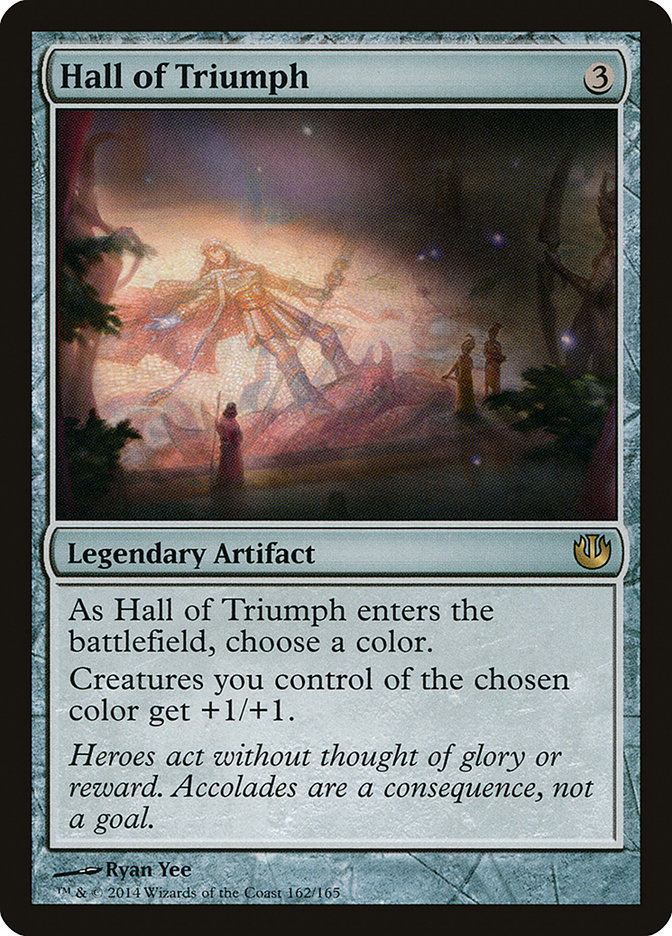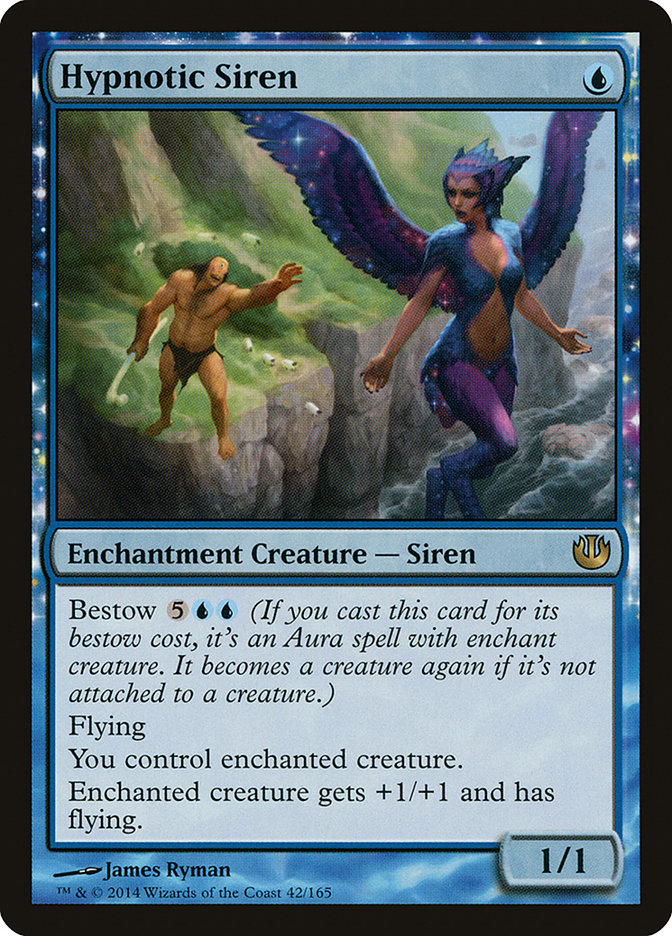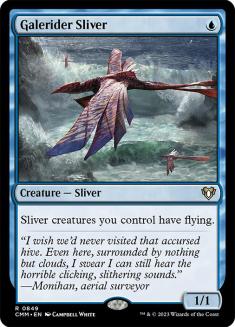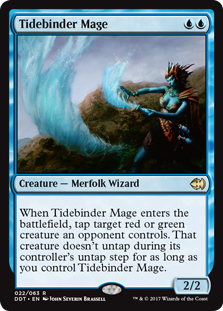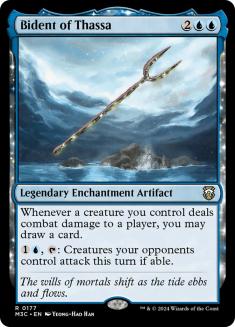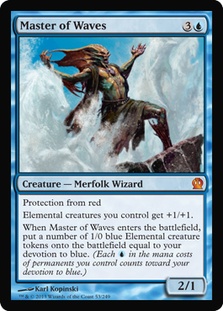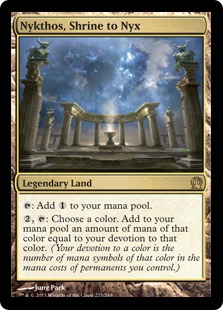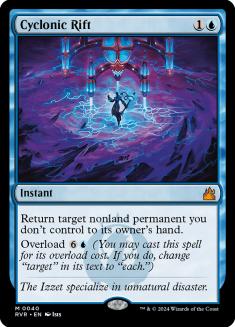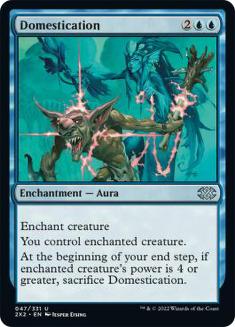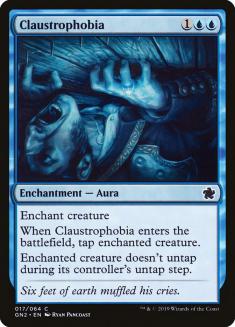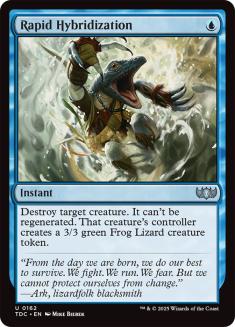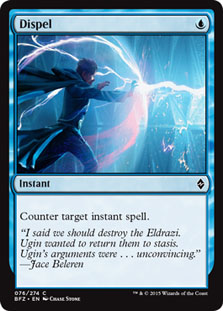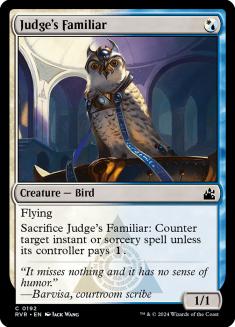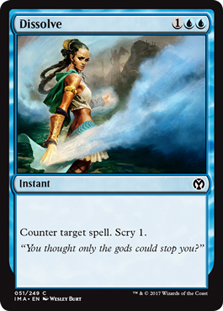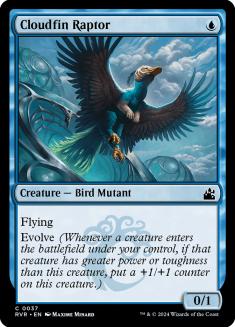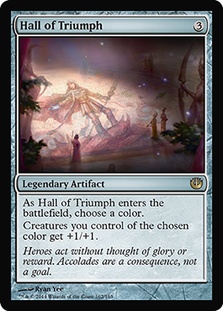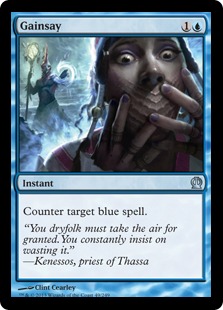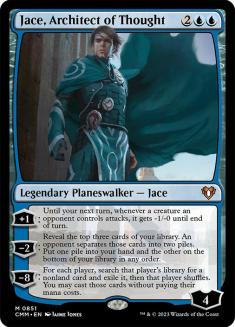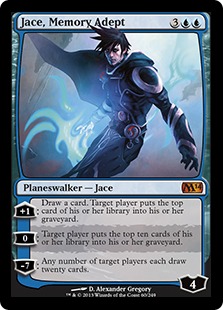I hate tournament reports. No one wins a tournament without running into plenty of good match-ups, getting lucky in a few key spots, and/or making some
mistakes that go unpunished. Sometimes, those mistakes even lead to getting a round 1 bye in a Legacy Open by making your semifinal match-up go forty
minutes longer than it should have. I like to call this phenomenon running average. Most tournaments have a small handful of interesting plays,
and everything else is straightforward as long as you are prepared. The preparation is the important part. That is where tournaments are won and lost. As
such, I will focus on the weeks leading up to the Providence Standard Open, noting each stage in the evolution of the following list:
Creatures (29)
- 4 Judge's Familiar
- 4 Frostburn Weird
- 4 Cloudfin Raptor
- 4 Nightveil Specter
- 1 Galerider Sliver
- 4 Tidebinder Mage
- 4 Thassa, God of the Sea
- 4 Master of Waves
Lands (5)
Spells (26)

But first, some context. I have been playing competitive Magic for over ten years, mostly around my home state of Connecticut. I have taken the game more
seriously for the past four years, making a few Pro Tour appearances while achieving moderate notoriety on the Open Series ( Mostly for getting punked by Patrick Sullivan on camera). A
quick search through my Magic history reveals an unmistakable trend: I only win with cheap blue creatures and mana elves. I tried playing Sphinx’s
Revelation once in Theros Standard and turned a 4-0 performance in Legacy into a 4-4 day 1 at the Indianapolis Invitational and a pile of frustration.
Sometimes, you just have to accept your limitations and play to your strengths. After that debacle, I piloted Mono-Blue Devotion to several middling
finishes until the addition of Courser of Kruphix lured me to Monsters. Mono-Blue was gaining precisely zero cards from Born of the Gods, and Bile Blight
looked to weaken an already close match-up with Black Devotion. It was a foregone conclusion that a deck filled with draft commons and Grizzly Bears would
fade as the Standard card pool increased and decks became more powerful, right?
After several months of more middling finishes with Monsters, I began to grow weary of the inconsistent mana that comes along with a three color ramp deck.
I longed for the consistency that only twenty Islands and a complete set of utility lands can bring. More importantly, I had fallen behind in my goal of
qualifying for the StarCityGames Players’ Championship. With Open Weekends in
Somerset, NJ and Providence, RI alongside the Invitational in Columbus, OH, I saw an opportunity to move up the leaderboard that I had to take advantage
of. Fortunately, Journey into Nyx offered some exciting options for a deck that needed a tune-up.
The synergy with Master of Waves is obviously powerful, but it is important not to overlook the effectiveness of Hall of Triumph in games where the big
threats (Thassa and Master of Waves) are neutralized and you are left attacking with a motley crew of blue creatures. When Cloudfin Raptor is hitting as
hard as Insectile Aberration, Tidebinder Mage is a Watchwolf, and each Frostburn Weird represents a potential six damage, these often criticized creatures
will close a game in short order. I immediately saw a card that could replace the lackluster, non-Bident four-drops the deck used to play. More
importantly, it is a card that rewarded focus toward a more aggressive, swarming game plan, which would inform my later decisions regarding how the deck
should be built.
The perfect complement to an anthem, Journey also provided an extra cheap flier to lower the curve and increase the opportunity for an aggressive opening
curve topped by a Hall. Additionally, Siren offered a powerful late-game effect for an aggressive deck with twenty-five lands and the ability to generate
mana with Nykthos, Shrine to Nyx. I could cut another more expensive card for an extra copy in order to fit the more aggressive game plan without
sacrificing in power.
With the new additions in mind, I built the following for a warm-up tournament before the Open in Somerset:
Creatures (29)
- 3 Judge's Familiar
- 4 Frostburn Weird
- 4 Cloudfin Raptor
- 4 Nightveil Specter
- 4 Tidebinder Mage
- 4 Thassa, God of the Sea
- 4 Master of Waves
- 2 Hypnotic Siren
Lands (25)
Spells (6)

I wanted to find room for the second Hall, but I felt that not adding any devotion would make it worse than Bident, which also plays well with the fifth
Flying Men and consistently overperformed for me in the past. The rest of the main deck is what everyone has seen for months. There was no need to cut into
the core of the deck, which I felt was being too quickly dismissed by the hive mind.
The sideboard was largely informed by my previous experience piloting the deck. Domestication was always backbreaking against Mono-Black Devotion, and even
though the emerging lists with the green splash had Golgari Charm as an answer, I still wanted access to such a powerful effect. The third Rapid
Hybridization is a card I am constantly looking to move to the main deck. Its utility as a removal spell and a quasi-counter to opposing removal spells is
perfect for a deck like this as it remains useful against both removal spells and blockers. Splashing for a more expensive and arguably less effective card
in Detention Sphere was never a consideration.
The split on Jaces could reasonably favor the more powerful Memory Adept, but given that you are likely to be behind on mana against a Sphinx’s Revelation
deck, I lean toward the cheaper, and thus easier to defend, option. I instinctively favored Gainsay in the counter split since it comes in for the mirror
as well as control. Negate and Dissolve are significantly better against control though, since they can target Elspeth and/or Archangel of Thune, which are
the most important cards in the match-up from their side.
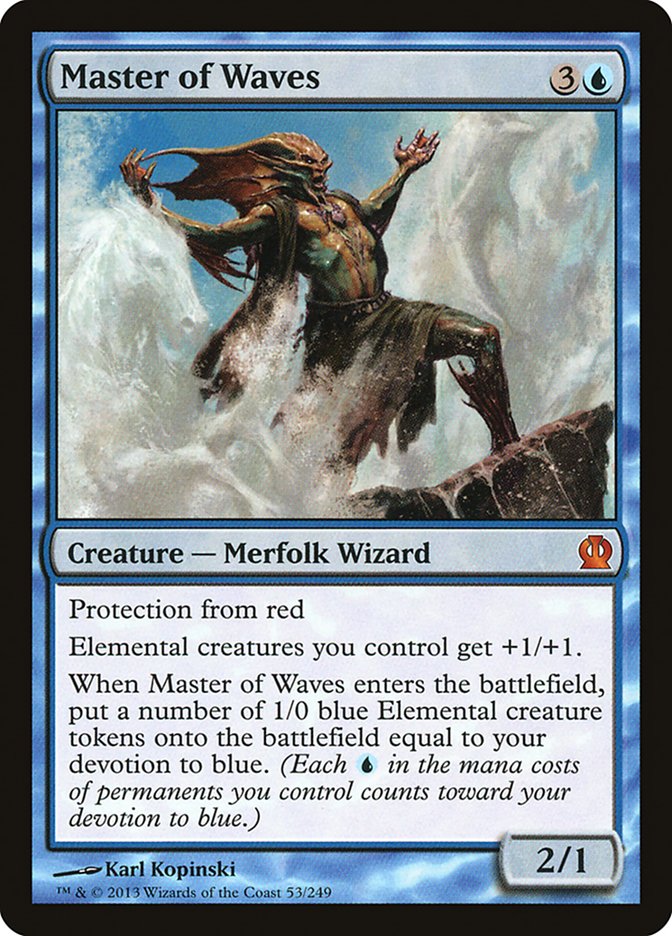
“Bring it on, Providence!”
A long day of battling revealed several important missteps I made with this list. First, Hall of Triumph was excellent and finding room for the second copy
would be a high priority moving forward. I was always happy to draw it and curving it into Master of Waves felt unbeatable for any deck without Supreme
Verdict. Hall made combat very difficult for any opposing creature deck, brought Nightveil Specter and Cloudfin Raptor out of Bile Blight range, and made
racing in the air against midrange decks a very solid plan. Conversely, Bident was never cast and often unwanted. I frequently scryed it to the bottom with
Thassa, or let it rot in my hand as I did not have the opportunity to play it without falling too far behind. I boarded down on them in every non-control
match-up and it was at times a liability against Black Devotion decks, where it previously shined. As more players adopt the established plan of swapping
Underworld Connections for Lifebane Zombie and using their removal spells merely to buy enough time to play some threats and then turn into the aggressor,
you will not be granted the time to leverage the advantage Bident generates. They can still have draws that are high enough on removal spells to make
Bident effective, but more often the games are about establishing a board presence rather than attrition. Bident remained excellent against the control
decks, so I decided to move the second copy to the sideboard.
Hypnotic Siren was similarly disappointing in that it was never bestowed, but having the extra one drop was effective. Pressuring your opponent from turn
one has a huge ripple effect throughout the game. If your opponent uses resources to deal with the early fliers, your big spells will land with little
resistance while an unanswered one drop will put enough pressure on their life total that they find it very difficult to stabilize and turn the corner. The
one mana creatures are the most frequently criticized cards in the deck, but to me they are the most important cards after Thassa and Master. Having some
weak draws in the middle and late game is a price I will gladly pay for excellent openings. Mono-Blue is playing for the early game and it is important to
accentuate your own strengths, even at the expense of accentuating some weaknesses.
From the sideboard, Domestication was the only notable underperformer. Nightveil Specter is the ideal target, and it is no longer universal in Black
Devotion lists. The addition of Hall also meant I was leaving in more Masters, making Domestication harder to fit in the curve.
With these lessons in mind, I registered the following list for the Standard Open in Somerset:
Creatures (29)
- 4 Judge's Familiar
- 4 Frostburn Weird
- 4 Cloudfin Raptor
- 4 Nightveil Specter
- 4 Tidebinder Mage
- 4 Thassa, God of the Sea
- 4 Master of Waves
- 1 Hypnotic Siren
Lands (25)
Spells (6)

Moving the second Bident to the sideboard necessitated cutting a counterspell and Gainsay was the worst one given the decline in mirror matches. Adding a
Dispel was a concession to the resurgence of R/W Burn, and I favor Negate over Dissolve since it is cheaper. I was stubborn in leaving in the third
Domestication, as I remained biased by its potential to create blowouts. It was quickly cut after I spent the day wishing for another Dissolve against the
control decks. In spite of that mistake, I was quite happy with this list, finishing with an 8-2 record that could have been improved upon with better
play.
Hypnotic Siren continued to do its best Flying Men impression, which led me to search for better alternatives. A quick Gatherer search revealed Galerider
Sliver as a viable replacement. I remembered some lists utilizing it at Pro Tour Theros, but had no direct experience with the card. Realizing that both
options had such marginal upside that the difference would not be reliably discernible from testing data, I made the decision based solely on theory.
Aside on Theory vs Testing
As a theorist at heart, I find testing to be overrated by the Magic community. It is very difficult to obtain reliable data in a reasonable amount of time,
so ultimately you are making subjective judgments about what data is representative and what is not. This is highly ineffective for making marginal
decisions, such as my choice of a ninth 1-drop or the difference an extra land makes. I would much rather make the decision based purely on theory so as to
be unbiased by the variance in my testing sample.
So Anyway…
I eventually sided with Galerider Sliver and the ability to give Mutavault flying over the bestow on Siren. The basis for my decision was once again the
focus on being aggressive. Having a creature base that is mixed between fliers and non-fliers makes them all weaker, since you are less likely to render
any enemy blockers ineffective. This is particularly relevant for Mutavault since it will often trade for an opposing copy. The commitment to aggression
also meant that games were more condensed, giving me less time to find the mana necessary to realize the potential of Siren.
As I learned in the following week of testing, my relentless pursuit of aggression was not without consequences. The deck had significantly fewer
permanents that provide two devotion. Lists from before Born of the Gods had multiple Bidents and Jaces in the main deck, and I had trimmed that down to
one. This meant my Thassas were less reliably turning into creatures, especially in the face of a few removal spells for Tidebinder Mages and Frostburn
Weirds. I still had plenty of devotion enablers in my sideboard, but I was worried about losing the power of what is arguably the best card in the deck. I
tried moving Cyclonic Rift and Nykthos to the sideboard to make space for more permanents, as well as cutting the Galerider Sliver, but ultimately found
that the cards that were replacing them were not suited for the main deck and I simply resolved to scry more aggressively toward enablers so I could keep
Thassa turned on in the face of removal spells. It is also worth noting that while a more aggressive list may be worse at turning Thassa into a creature,
it is better at using her activated ability since it applies more early pressure.
My hunt for more devotion enablers led to the final change: the inclusion of Claustrophobia over the second Cyclonic Rift. Initially suggested to me by
Christian Calcano, Claustrophobia has clear applications against Monsters and Desecration Demon, while being a non-creature permanent for Thassa against
decks that have plenty of creature removal after sideboarding.
As I expected, the tournament was filled with plenty of midrange green decks, a healthy amount of Black Devotion variants, and less control than in the
past due to the increasing popularity of Monsters. This is a perfect metagame for Blue Devotion, and I was the beneficiary of many easy games where my
opponents groaned at the sight of a turn one Cloudfin Raptor. I would honestly be surprised to see an abrupt shift from this metagame toward one that is
poor for Mono-Blue since I am happy to play against any deck other than Sphinx’s Revelation control decks, and even those games are reasonably close after
sideboarding. If there is an increase in cheap removal to combat our lower curve, a modest change such as cutting the Galerider Sliver for a Jace,
Architect of Thought would be reasonable. A more removal heavy metagame could also call for moving the Nykthos and Cyclonic Rift to the sideboard in order
to increase threat density. I would likely move an Architect and a Rapid Hybridization to the main deck as both have greater utility in games of attrition.
Since the game plan rarely changes based on the opponent, I will forego individual matchup analysis with one exception: post-sideboard games against
control. The swarm strategy is so poorly situated against Supreme Verdict and Jace, Architect of Thought, we are forced to transform into an aggro-control
deck. The ideal game after sideboarding is to land a single creature and an enchantment or planeswalker and use those to pressure the control player into
playing their key spells into counters. Do not fight over spot removal spells unless it will cripple their position. The control decks are so threat light
that it is reasonable to keep them off the high-end threats and card advantage they rely on to get ahead on resources and/or close out the game. For an
example of how these games play out, I highly recommend watching Sam Black’s most recent video series, where he plays
against a control deck in the first round. The games go long and require great patience, but you need not fear playing into the late game.
I am happy to say that last weekend has left me in great position to secure an at-large bid for the Players’ Championship, and to make a run at one of the
last two seasonal spots should I post a few more top finishes. Thank you to everyone who supported me during the weekend; it was certainly an unforgettable
ride. See you in Columbus!
Appendix: Obligatory Sideboarding Guide
Since so much of sideboarding is contextual, I will list the range of cards that could possibly come in or out. All lists are in no particular order.
Black Devotion
Candidates to remove:
Candidates to add:
General Notes: Rift and Nykthos always come out for the Claustrophobia and Rapid. The last slots are more variable and depend on how their deck is
configured. Bile Blight and Drown in Sorrow make Master of Waves and some of the smaller creatures less desirable, even with Hall of Triumph. I would never
cut two cheap creatures though, since it is still paramount to have early plays. Domestication definitely comes in if they have Nightveil Specter, and
Dispel is significantly better on the play.
Green Midrange/Monsters
Candidates to remove:
Candidates to add:
General Notes: The value of Judge’s Familiar is tied to the presence of Mizzium Mortars. Bident is significantly better against Jund Monsters than the
others since they typically sideboard a lot of spot removal. I generally do not like Dissolve here, but will bring it in here if they are playing a slower
game after sideboarding. Some lists play an Essence Scatter which is a fine option for match-ups like these.
UWx Control
Candidates to remove:
Candidates to add:
General Note: Since we wish to not extend into a Supreme Verdict, the first cuts are the threats that are most dependent on playing multiple creatures to
be powerful. The Cyclonic Rift only comes out if they are playing the new list with Planar Cleansing over Detention Sphere.


